Dominica travel tips
Dominica travel tips: Lush, mountainous paradise in the Caribbean with pristine rainforests, volcanic landscapes, vibrant marine life, and warm, welcoming culture.
Divisions 🌎
Dominica travel tips. Here is a list of all the divisions of the Dominica.
Before you go 🛩
Important information you should know before your trip
Info
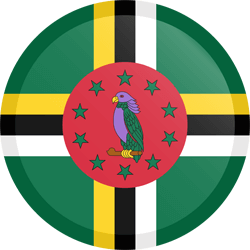
Capital | Roseau
Flag Codes
ISO alpha-2 DM, ISO alpha-3 DMA
Currency
Badge | Eastern Caribbean dollar
CODE | XCD
NUMBER | 951
SYMBOL | $
FRACTION | Penny
Mobile Coverage
Dialing Code | +1-767
SIM Card
Coverage
3G / 4G / 5G
Mobile Networks |
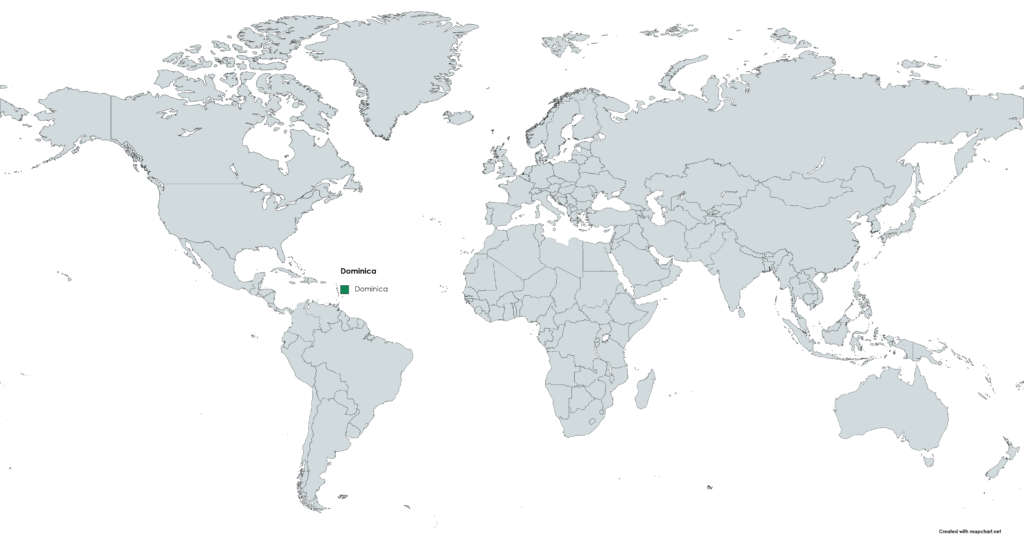
Location
Dominica is an island country located in the Caribbean Sea. It is part of the Lesser Antilles archipelago in the Eastern Caribbean. The coordinates of Dominica are approximately 15.4150° N latitude and 61.3710° W longitude.
Dominica is situated between the French overseas territories of Guadeloupe to the north and Martinique to the south. It is known as the “Nature Isle of the Caribbean” due to its lush rainforests, volcanic peaks, hot springs, and natural beauty.
The island has a total land area of about 751 square kilometers (290 square miles) and is roughly 47 kilometers (29 miles) in length and 26 kilometers (16 miles) in width. Roseau, the capital and largest city of Dominica, is located on the western coast of the island.
Dominica is a mountainous island with rugged terrain and numerous rivers and waterfalls. It is home to the Morne Trois Pitons National Park, a UNESCO World Heritage Site, which showcases the island’s unique natural features and biodiversity.
Currency
The currency of Dominica is the Eastern Caribbean dollar (XCD). It is the official currency of several countries in the Eastern Caribbean, including Dominica, Antigua and Barbuda, Grenada, Saint Kitts and Nevis, Saint Lucia, and Saint Vincent and the Grenadines. The Eastern Caribbean dollar is pegged to the United States dollar at a fixed exchange rate of 1 USD = 2.70 XCD.
In Dominica, you can use Eastern Caribbean dollars for most transactions, including shopping, dining, and transportation. It’s advisable to carry some cash for small purchases, as not all establishments may accept credit cards. ATMs are available in major towns and tourist areas where you can withdraw Eastern Caribbean dollars using your debit or credit card.
Languages
The official language of Dominica is English. English is widely spoken and used for official purposes, government communication, education, and business transactions throughout the island. The majority of the population is fluent in English, which makes it easy for English-speaking visitors to communicate and navigate their way around Dominica.
In addition to English, there are also some local dialects and creole languages spoken by certain communities on the island. These include Dominican Creole English (Kwéyòl), which has influences from African, French, and other Caribbean languages. While English is the primary language of communication, you may also hear some locals conversing in Kwéyòl or using local expressions and idioms.
As a visitor to Dominica, you will generally find that English is widely understood and spoken, particularly in tourist areas, hotels, restaurants, and shops. It’s always a good idea to learn a few basic phrases and greetings in the local language to show respect and connect with the local people.
Climate 🌡
Dominica has a tropical rainforest climate characterized by high temperatures, high humidity, and abundant rainfall throughout the year. The climate is influenced by the island’s location in the Caribbean and its mountainous terrain. Here are some key features of the climate in Dominica:
Temperatures:
Rainfall: Dominica is known for its significant rainfall, which contributes to its lush rainforests and rivers. The island receives an average annual rainfall of about 2,000 to 4,000 millimeters (79 to 157 inches). The wettest months are typically between June and October, with a peak in rainfall during September. The drier months are generally from December to April.
Dominica experiences warm temperatures year-round. Average daytime temperatures range from around 25°C (77°F) to 31°C (88°F). Coastal areas tend to be slightly cooler due to the influence of sea breezes, while inland regions and higher elevations can be slightly cooler as well.
Hurricane Season:
Dominica, like other Caribbean islands, is susceptible to tropical storms and hurricanes. The official hurricane season runs from June to November, with a higher likelihood of storms between August and October. Visitors should stay informed about weather conditions and follow any advisories or warnings issued by local authorities during this period.
Humidity:
Dominica has high humidity levels throughout the year, ranging from 70% to 90%. The humidity can make the temperatures feel even warmer, particularly during the wetter months.
Trade Winds:
Dominica benefits from the trade winds, which help to moderate the temperature and provide a pleasant breeze. The prevailing winds generally blow from the northeast, providing some relief from the heat and humidity.
It’s important to note that weather conditions can vary, and it’s always advisable to check the local weather forecast and any travel advisories before visiting Dominica. The island’s lush vegetation and natural beauty are a result of its climate, but visitors should be prepared for the possibility of rain showers, especially during the wetter months.
Dominica travel tips
Here are some travel tips for visiting Dominica:
Nature Paradise:
Explore Dominica’s lush rainforests, waterfalls, and volcanic landscapes for a unique eco-adventure.
Caribbean Gem:
Discover unspoiled beauty, friendly locals, and vibrant culture on this Caribbean island.
Weather Preparedness:
Pack rain gear and sturdy shoes; the weather can be unpredictable in the rainforest.
Cuisine:
Relish local dishes like callaloo soup, fresh seafood, and the national dish, “Mountain Chicken.”
Transportation:
Rent a car for flexibility, use local buses, or hire a guide for island exploration. View Guide.
Electricity:
220-240V, 50Hz; British-style plugs are used.
Island Etiquette:
Embrace the laid-back lifestyle, engage with locals, and immerse yourself in Dominica’s natural wonders.
Enjoy the incredible beauty and diversity that Dominica has to offer!

The best of the best
Dominica, known as the “Nature Isle of the Caribbean,” has a rich culinary heritage that reflects its Caribbean and West Indian influences. The island’s cuisine incorporates a variety of flavors, spices, and locally sourced ingredients.
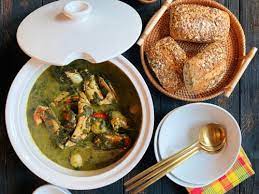
Callaloo Soup
A popular dish made with callaloo leaves (similar to spinach), coconut milk, herbs, and often served with meat or seafood. It is a flavorful and nutritious soup commonly enjoyed in Dominica.
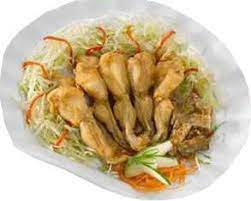
Mountain Chicken
Despite its name, mountain chicken is not chicken but a local delicacy made from the giant ditch frog, also known as the mountain chicken frog. It is often seasoned with herbs and spices, then stewed or grilled. Please note that the mountain chicken frog is an endangered species, and consumption of this dish is now restricted due to conservation efforts.
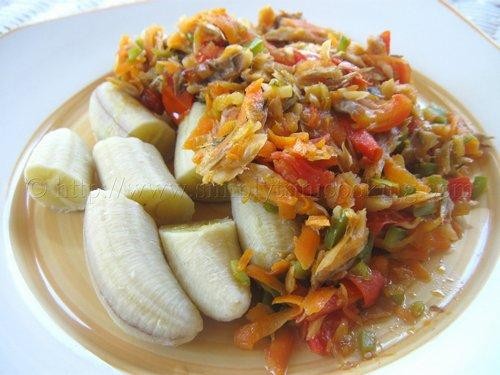
Saltfish and Green Fig
A traditional breakfast dish in Dominica, it consists of salted codfish (saltfish) cooked with green bananas (known as green figs). The fish is typically soaked to remove excess salt, then sautéed with onions, peppers, and spices.
Here are some typical foods you can find in Dominica:
Callaloo and Dumplings: Callaloo, a leafy vegetable similar to spinach, is cooked with coconut milk, spices, and often paired with cornmeal or flour dumplings. This dish is a hearty and comforting staple in Dominican cuisine.
Bakes: Bakes are a popular side dish or breakfast item in Dominica. They are fried bread rolls made from dough typically composed of flour, water, sugar, and yeast. Bakes can be enjoyed plain or filled with various ingredients such as saltfish, cheese, or meats.
Crab Back: This dish features crab meat mixed with breadcrumbs, spices, and seasonings, then stuffed back into the cleaned crab shell and baked. It is a savory and indulgent seafood specialty.
Titiwi Fish: Titiwi, a small freshwater fish found in Dominica’s rivers, is often pan-fried or stewed with local herbs and spices. It is a favorite among locals and showcases the island’s abundant fish resources.
Fresh Fruits: Dominica is known for its bountiful tropical fruits, including mangoes, guavas, passion fruit, papayas, bananas, and more. These fruits are commonly eaten fresh, used in juices, smoothies, or incorporated into desserts.
The island’s cuisine is diverse and influenced by its local produce, Caribbean flavors, and cultural heritage.
Transportation 🚥
More information about this country
Choose your destination 📍🗺
Useful Links ✅















